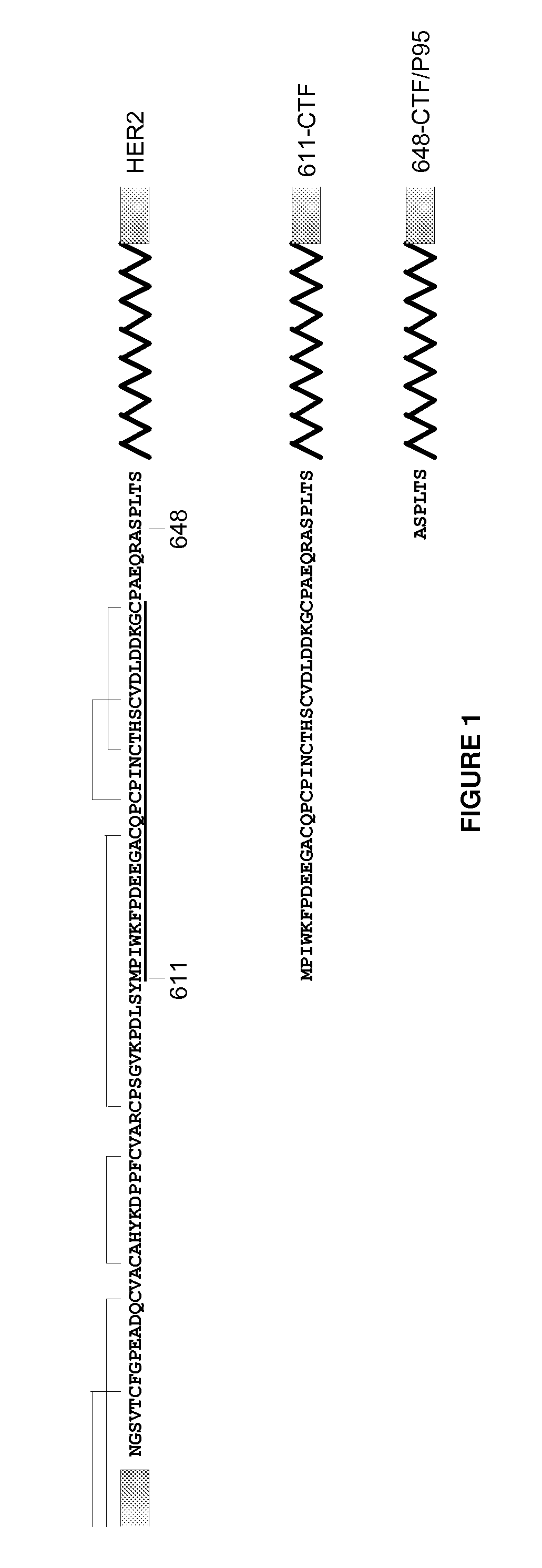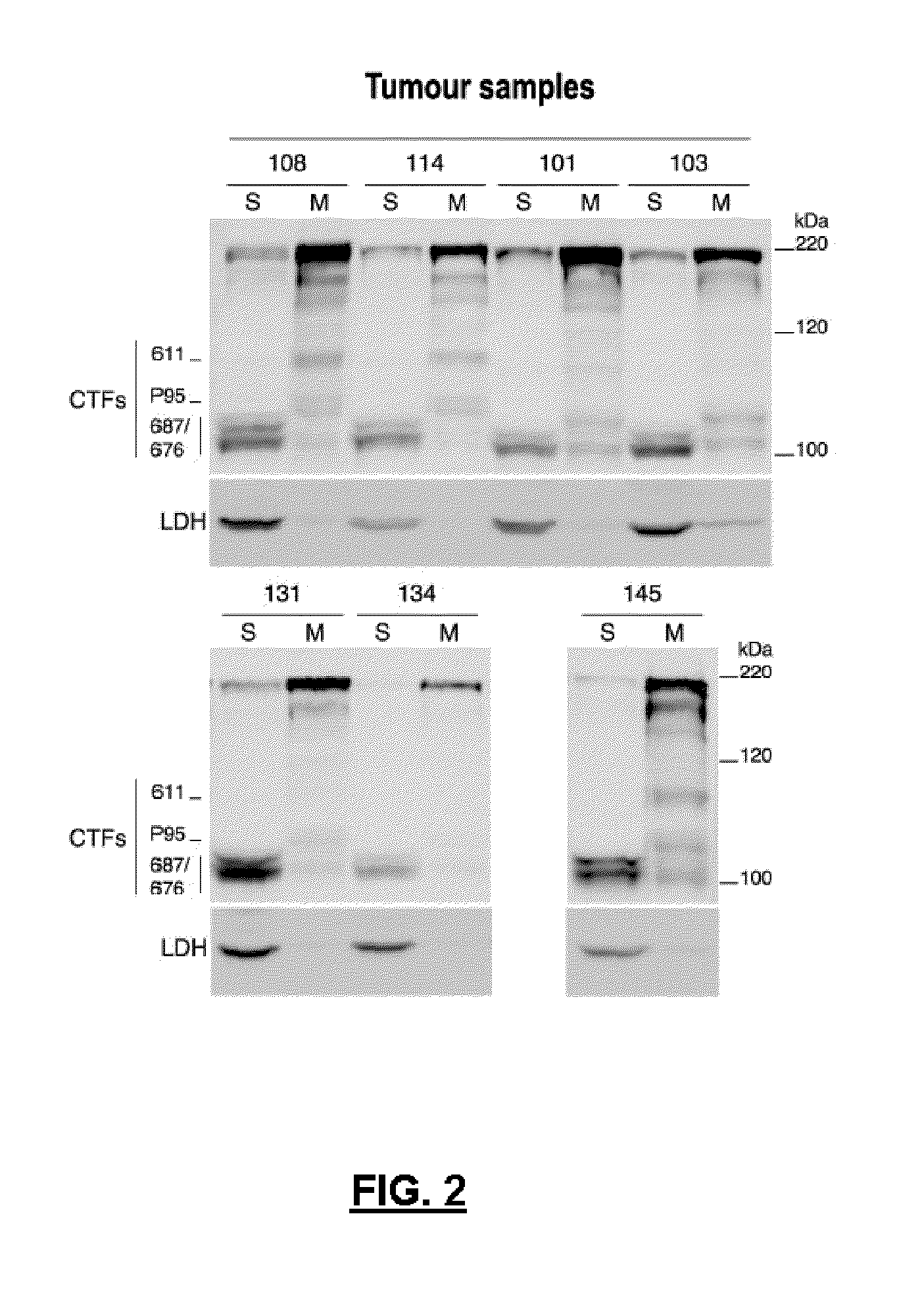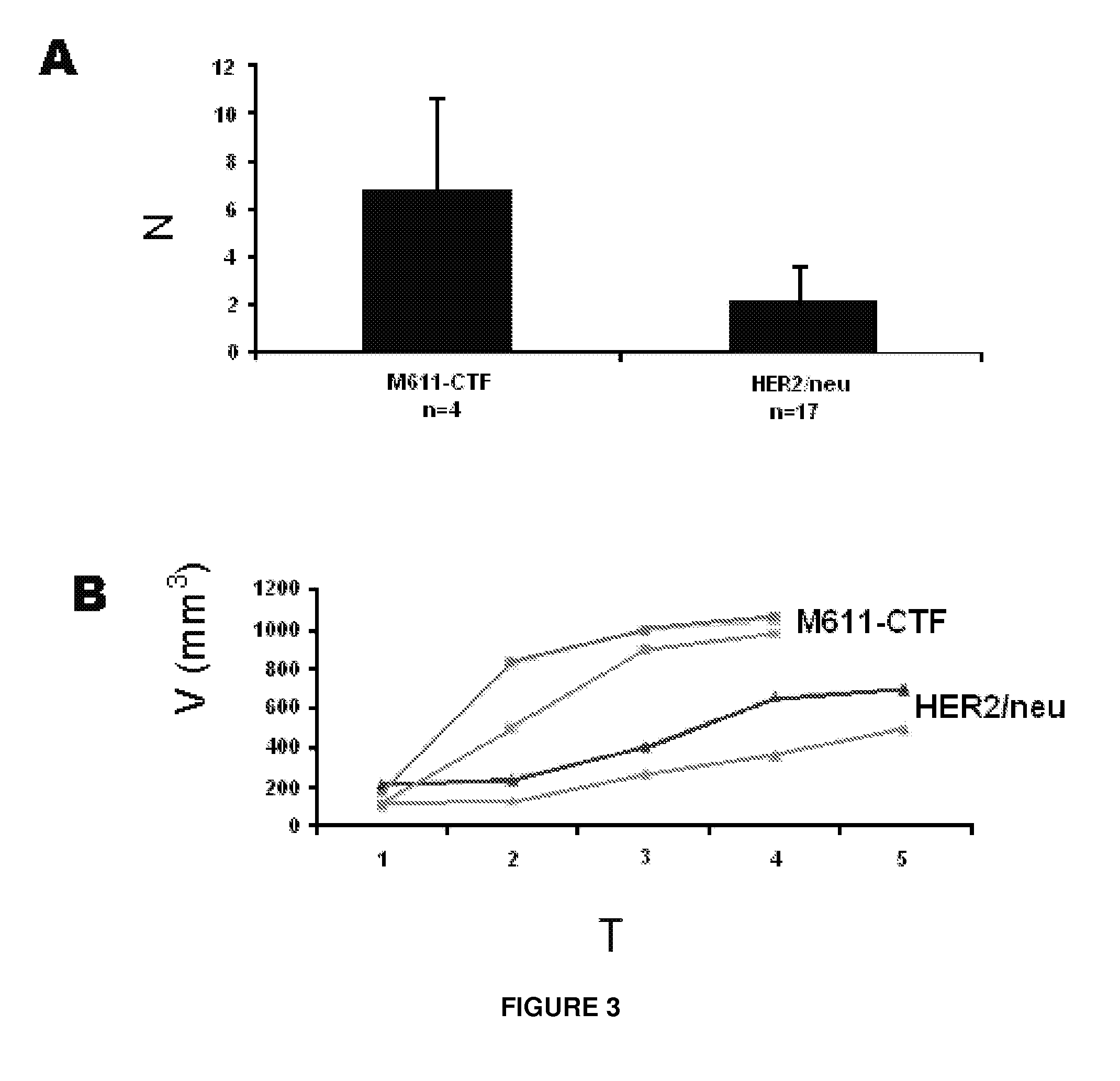Antibodies against HER2 truncated variant CTF-611
a technology of ctfs and antibodies, applied in the field of antibodies against her2 truncated variants, can solve the problems of difficult to distinguish patients expressing only her2 from patients expressing her2 and ctfs, and achieve the effect of facilitating the task of the physician
- Summary
- Abstract
- Description
- Claims
- Application Information
AI Technical Summary
Benefits of technology
Problems solved by technology
Method used
Image
Examples
example 1
Detection of the Fragment of SEQ ID NO: 1 Through Differential Migration
[0110]In FIG. 2, which corresponds to an image of an electrophoresis gel and subsequent Western-type transfer (Western-blot), different samples of breast cancer (108, 114, 101, 103, 131, 134 and 145) were loaded on the tracks. From each sample both the soluble fraction (S) and the membrane fraction (M) of the cell lysate were analysed, in order to visualize what type of HER2 molecule was present and in what fractions. In principle, it is expected that both the complete receptor and the form of the SEQ ID NO: 1 are in the cell membrane. For the detection of complete HER2 and of CTF-611 form, antibodies were used (CB11) directed to the cytoplasmic domain of the proteins, which is a common domain in both protein forms. As an analysis' control the presence of the lactate dehydrogenase (DHL) enzyme was detected. In most samples, bands corresponding to the complete HER2 receptor and in the membrane fraction, a band co...
example 2
Detection of the Presence of the HER2 Fragment of Sequence SEQ ID NO: 1 with Monoclonal Antibodies Directed at Neo-Epitopes Defined by SEQ ID NO: 2 or SEQ ID NO: 3.
[0112]Using the peptide having the sequence SEQ ID NO: 4, monoclonal antibodies were obtained. This peptide corresponds to the 32 amino acids of the N-terminal end of the CTF-611 form or of SEQ ID NO:1, in which most cysteines have been replaced by serines for the purpose of conjugating it with the immunogen known as Keyhole-limpet hemocyanin (KLH).
[0113]SEQ ID NO: 4 corresponds therefore to a peptide equivalent to that of SEQ ID NO: 3, although adapted in order to carry out the immunisation technique. A skilled in the art will understand that the antibodies directed against the synthesized peptide SEQ ID NO: 4 will also recognise the epitope defined by the SEQ ID NO: 3 present in the truncated form of the HER2 receptor (SEQ ID NO: 1 or CTF-611). Similarly, a skilled in the art can follow that if the synthesized peptide u...
example 3
Characterization of the Epitopes Recognized by the Monoclonal Antibodies 214D8c12h4 and 226H4e8d10 Against the N-Terminus of CTF-611
[0121]FIG. 6A shows a schematic representing the primary sequence of the juxtamembrane region of CTF-611. The N- and the C-termini of the molecule are indicated. The transmembrane and the kinase domains are indicated by a dashed and a grey box, respectively. The sequence of the deletion constructs CTF-613 and CTF-616 is indicated.
[0122]In order to characterize the epitope recognized by 214D8c12h4 and 226H4e8d10 antibodies, cells transfected with cDNA constructs expressing CTF-611, CTF-613 or CTF-616 were used. Cell lysates were analyzed by Western blot with CB11 (FIG. 6B, left panel), an antibody against the cytoplasmic domain of HER2, with 214D8c12h4 (FIG. 6B, middle panel) or with 226H4e8d10 (FIG. 6B, right panel).
[0123]Conclusions. The Western blot analysis of lysates from cells expressing CTF-611, CTF-613 and CTF-616 shows that 214D8c12h4 and 226H4e...
PUM
| Property | Measurement | Unit |
|---|---|---|
| concentrations | aaaaa | aaaaa |
| concentrations | aaaaa | aaaaa |
| thickness | aaaaa | aaaaa |
Abstract
Description
Claims
Application Information
 Login to View More
Login to View More - R&D
- Intellectual Property
- Life Sciences
- Materials
- Tech Scout
- Unparalleled Data Quality
- Higher Quality Content
- 60% Fewer Hallucinations
Browse by: Latest US Patents, China's latest patents, Technical Efficacy Thesaurus, Application Domain, Technology Topic, Popular Technical Reports.
© 2025 PatSnap. All rights reserved.Legal|Privacy policy|Modern Slavery Act Transparency Statement|Sitemap|About US| Contact US: help@patsnap.com



